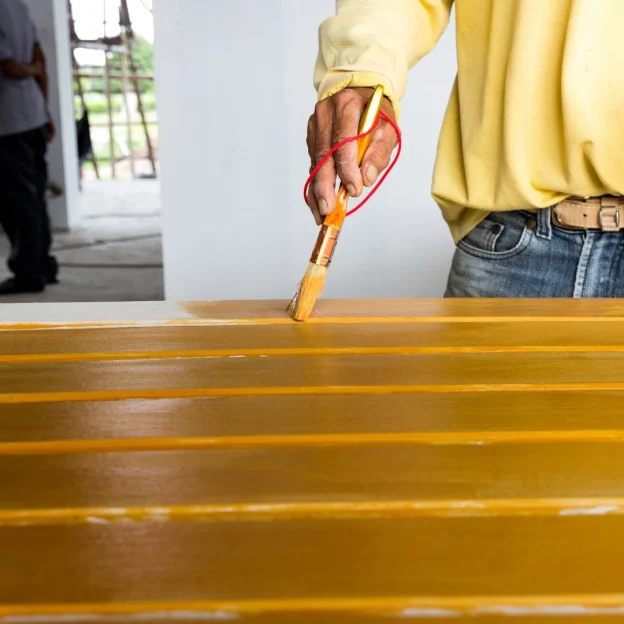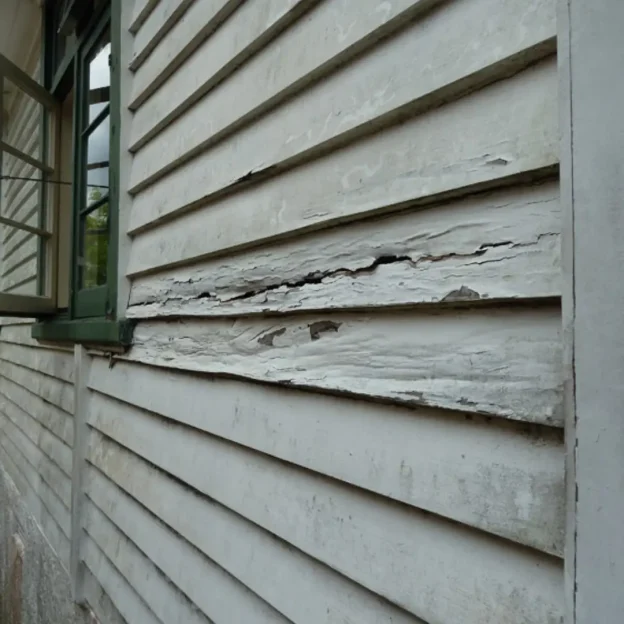Revamping a fiber cement board with a fresh touch-up of paint is possible and makes your home look appealing as well as protects the exterior from natural elements. However, these sheets are available in pre-primed and pre-painted in multiple colors, so the buyers do not need to get worried to color them during or after immediate installation.
Although, after a point, you would wish to renew and change the exterior appearance overall. The reasons could be solely to add a refreshing perspective or to perform regular maintenance of this shield that can wear out after a few years, giving in to changing weather conditions. Or it could be both! In either case, painting the whole exterior is a lot of investment and you must be ready with some prior research and how to go about for the best results.
Which paint is suitable for fiber-cement board siding?
100 percent acrylic paint or acrylic latex paint is recommended for fiber cement boards as it acts as a binder and allows the latex to stretch slightly, making it less fragile, healthy, environment-friendly, and more weather-resistant. This type of paint is easy to work with as it dries easily. Yet you must get a rough idea of all the possibilities available in the market for yourself.
Some characteristics of paints you must consider for fiber cement boards :
- The production process of paints releases volatile organic compounds, that are created by chemicals and solvents utilized in making these pigments. Exposure to these fatal vapors is harmful to our health. Inhaling them can irritate your eyes, nose, and throat. Even though they have less impact when you are painting outside, you should opt for a low VOC or zero VOC that is more eco-friendly, non-toxic, and emit fewer fumes. Oil-based paints contain more volatile organic compounds (VOCs) than latex-based paints. The latter are water-based whereas oil paints contain natural oils like linseed and synthetic alkyd.
- Take the drying duration of paints into account according to the weather and also the time you have in your hands to complete the task. As mentioned earlier, latex paints dry quickly, oil paint consumes six to eight hours to dry to the touch. Plus up to 24 hours to cure completely before adding a second coat.
- Oil paints offer more durability, give a better glow, and better adhesion to rough surfaces. Yet, they tend to get yellow with age, will need a solvent to clean up, and are thicker, thus harder to spread. High-quality latex paint sustains well as they are flexible as well as resistant to cracking and chipping.
- Diverse climate conditions should be examined as a paint that is suitable for a high desert region may not be the best choice for a humid climate. This becomes a prominent factor in countries like India, which observes different seasons, and has various relief features like mountains, deserts, plateau regions, seas, etc. If you stay in a humid or wet region, choose “mildew resistant” paint; if you live in a sunny climate, go for “UV resistant” paint. Oil paints are exceptionally water-resistant, and for many years, oil was the sole option for outdoor cement board painting. This has changed with the development of good-quality acrylic-based latex paint.
- If your siding has been painted previously with latex, go with latex; if it has been coated previously with oil, use oil. Avoid changing it during repainting, as it can lead to bubbling or peeling.
How often to perform repainting for a fiber-cement board siding?
These water-resistant, thermite-proof, and durable fiber cement boards can sustain the paint for 10-15 years at least after the first fitting. It means you only have to recoat it for further maintenance and manage its aesthetic appeal after a decade.
Steps to repaint a fiber-cement board siding
First, check out for openings or cracks in exterior siding. If you find any, seal them properly, with quality acrylic or siliconized acrylic caulk. Although you should not seal the side and bottom edges unless the manufacturer of the siding recommends it.
- Treat any mildew that is present with a solution of one part bleach to three parts water. Apply the solution to the affected areas, leave it on for 20 minutes, then rinse it off thoroughly. Perform these tasks ensuring you are carrying eye and skin protection.
- Clean these boards that might be filled with dirt, dust, or debris, with cement-specific cleaners and gentle water pressure. Let it dry fully.
- Apply one coat of primer that applies to the fiber-cement siding and let it dry.
- Varnish the board with paint with the help of synthetic bristle brushes or rollers so that you can break in the color to the corners of the walls. If your siding is in shingle or shake form instead of horizontal planks or vertical panels, using a sprayer can save you time in getting coverage on the many edges and contours of the material. If you do opt for a sprayer, back-roll, or back-brush after spraying.
- If you want, you can apply two coats of paint. But it is not necessary.
- Allow the paint to dry for two to three days, then apply a sealant.
- Clean all application materials with pure water and soap. Seal unused paint in the can.
Can you repaint a fiber-cement siding yourself?
Technically yes! Only if you have enough time, energy, and comfortable with DIY tasks, you can opt to revamp the exterior siding yourself. It can save you money if you follow the precautions well and work step-wise. But with prior research, choose a budget-friendly expert and accomplish the repainting with professionals.
EcoPro pre-finished fiber cement planks serve a range of classy colors like Walnut, Dark Chocolate, and Red oak that will give an elegant impression to your house. These boards are color baked into the material during the manufacturing process, making it last even longer than a post-installation application. You can renovate the siding by repainting it with the set of instructions given above and according to your estimated expenses.









